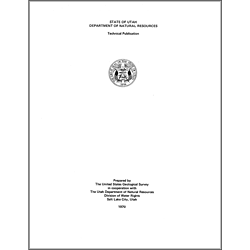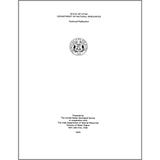Reconnaissance of Chemical Quality of Surface Water and Fluvial Sediment in the Dirty Devil River Basin, Utah (TP-65)
By: J. C. Mundorff
The water-quality reconnaissance in the Dirty Devil River basin covered an area of about 4,300 square miles. Data sites were obtained by the U.S. Geological Survey one or more times at 104 during the period July 1975 to September 1976; and during visits to 34 sites during the same period, the streams were dry. Precipitation was below normal in both 1975 and 1976 at weather stations at Emery and Capitol Reef National Park and was above normal in 1975 and below normal in 1976 at Hanksville. Streamflow was near normal in the Dirty Devil River basin in 1975 and was much below normal in 1976. Rocks that crop out in the basin range in age from Permian to Quaternary. The Carmel Formation of Jurassic age and various members of the Mancos Shale of Cretaceous age are major contributors of dissolved solids to streams in the basin.
Thus, the principal objective of the study was a general definition of water-quality characteristics of the basin; a secondary objective was the definition of specific problem areas on stream reaches. The water-quality reconnaissance of the Dirty Devil River basin was limited in scope; it did not include intensive study of the effects of municipal sewage, irrigation, or mining on water quality.
Other Information:
Published: 1979
Pages: 132 p.
Plates: 1 pl.
Location: Wayne County
Media Type: Paper Publication







